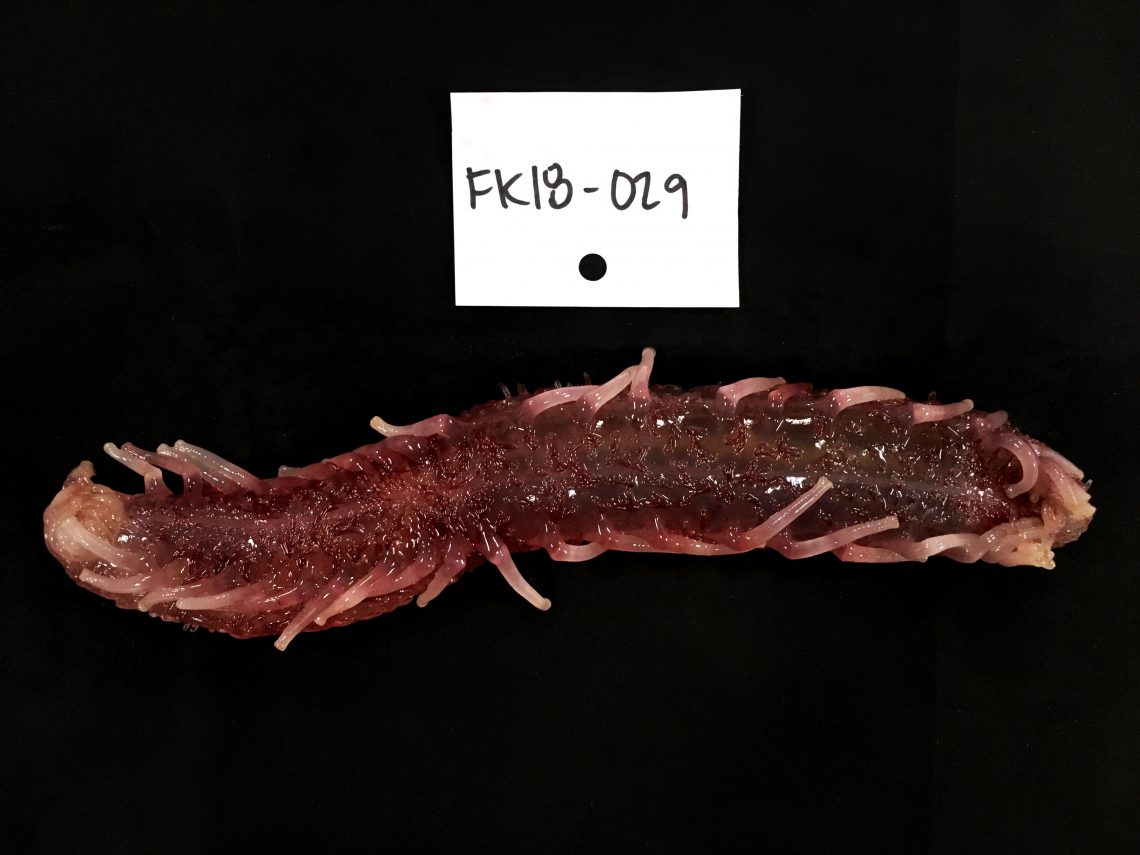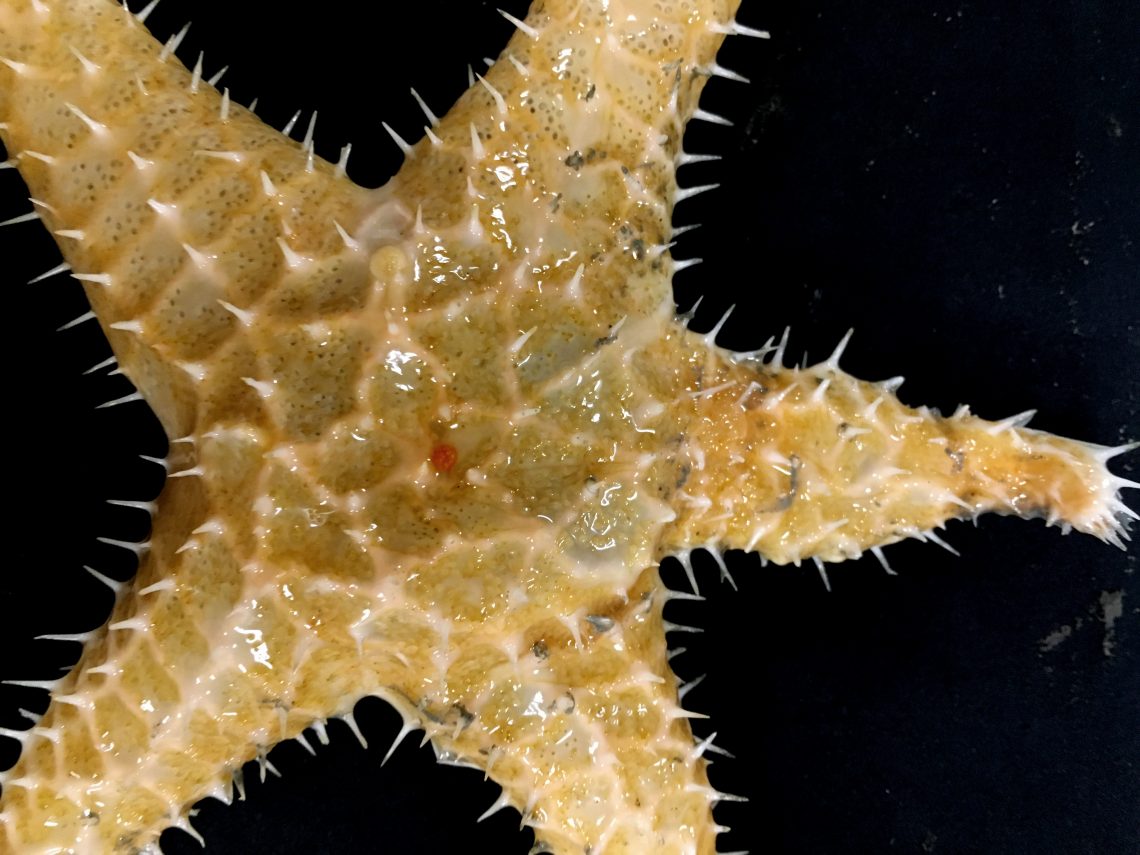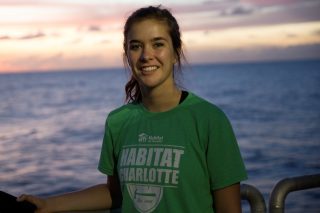As one of the few biologists on R/V Falkor, I am able to understand the methane seeps and bubble plumes from a different angle. While the effect of methane and hydrogen sulfide released from the sediment can be understood most fundamentally from a geochemical perspective, these chemical compounds can have enormous implications for surrounding biological life. Methane is widely known as a potent greenhouse gas or as the primary component of cow flatulence, but it also plays a role as an energy source for life in the deep sea. My part in this investigation is to see the extent to which the methane is supporting cold seep ecosystems to then inform their conservation.
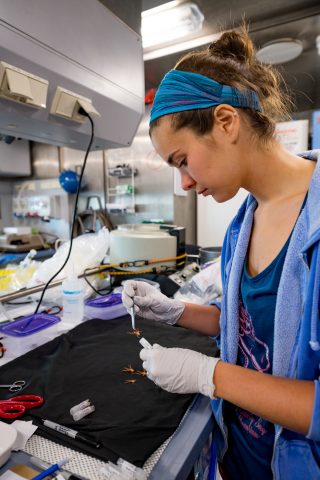
Interlocking and Interdependent
The sun fuels most life on Earth. Through a process called photosynthesis, plants and other organisms at the bottom of the food chain convert sun energy to the energy they need to survive. Consequently, other life, including humans, relies indirectly upon this converted sun energy. However, life in the deep sea must endure low temperature, high pressure, reduced oxygen, and—often most challenging—no sunlight. Most of the ocean is pitch black, with the “photic zone,” or the sunlit area of the ocean, extending only about 80 meters below the sea surface. Challenger Deep, the lowest point of the Mariana Trench, is almost 11,000 meters deep, so you can imagine that most sea life resides in this sun-deprived zone and must develop unique adaptations to mitigate such a challenge. If you find yourself watching ROV SuBastian’s live stream, you will see little particles in the water that could remind you of plummeting through cosmic dust or suffering through a winter blizzard. These little particles are aptly named “marine snow” and refer to this shower of organic material falling from the upper water to the deep ocean. Phytoplankton are the “plants of the ocean” in that they serve as the base of the food chain for most ocean organisms by converting sunlight into usable energy and contribute to this marine snow that is caught by most primary consumers in the deep. This less direct means of obtaining energy from the sun often creates a desolate and harsh environment for deep sea life. However, there are hot spots of abundant and robust ecosystems in the deep that take advantage of a different energy source: methane.
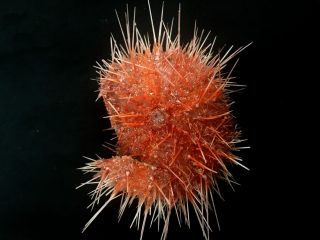
Setting the Base
Around the bubble plumes of methane you see in our Hunting Bubbles expedition, there are patches of white or black on the seafloor. These areas are actually densely populated bacterial mats that perform chemosynthesis, converting chemical energy from the methane instead of sunlight energy. Looking farther you will see vast mussel and clam beds, pensive crabs, sea stars, snails, tumbling sea cucumbers, fish, inquisitive octopuses, and even majestic deep sea corals that decorate the sea floor. Together these organisms create a vibrant and unique setting for biological study. Life is drawn to other life, and these methane seeps serve as a “watering hole” in the deep. Many of these animals are indirectly supported by the methane in that they live in symbiosis with the bacteria and share nutrients, eat the bacteria, or eat animals that eat the bacteria. However, it is unknown exactly how far the influence of the carbon seeps extends. Are these animals being supported by chemical energy from the seep, sunlight energy carried via marine snow, or some combination of both?
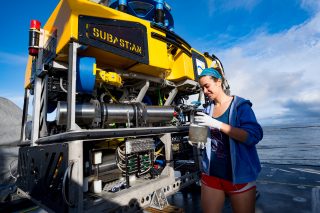
Seeking Answers
Using ROV SuBastian, we are collecting a diversity of animals around the methane seeps, from tiny five millimeter kanoia snails to two foot long homolid crabs. I quickly preserve them in the lab aboard the ship to be taken home to Philadelphia, PA to be further analyzed. Carbon atoms from methane and carbon atoms from sun-derived marine snow are different; and we are able to identify unique carbon signatures in these collected animals to trace the carbon back to the source. By identifying the carbon source—and therefore source of life—in these cold seep ecosystem individuals, we can both better understand the influence of the seep and also the fate of these seep-sustained organisms. With a changing climate, an uncertain marine future, and the potential for methane reserves as a natural gas resource it is increasingly vital for this unique ecosystem to be better understood. In order to be protected, these vibrant – yet delicate – habitats need to be studied so that their source of life can be sustained and their conservation ensured.
